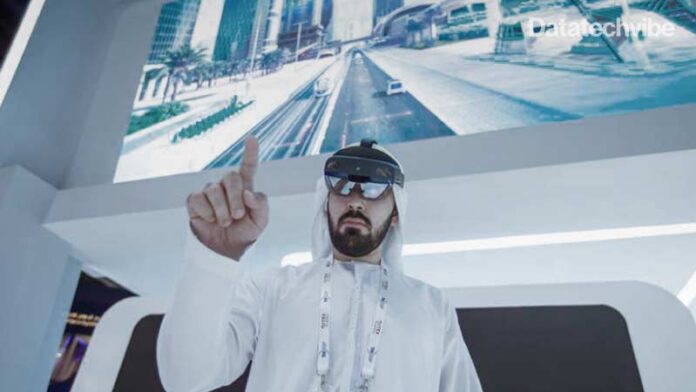From huge 3D talking heads to the latest prototype in flying cars and automated taxis, GITEX 2022 launched in Dubai with an array of new science and technology innovations to explore.
One of the world’s largest tech shows offers an opportunity for companies from across the region to showcase their latest innovations alongside some of the global tech giants. For others, it’s an opportunity to show what the future will look like.
Government departments show how the Metaverse, can help with urban development by simulating the planning of new areas via a digital twin of Dubai.
Dubai Municipality displays how low-altitude corridors and vertiports for unmanned drones are being developed to provide new services in air mobility, air freight, logistics and aerial surveys.
Dubai Electricity and Water Authority (DEWA) shows how it would use its Mwafeq four-legged robot to inspect and audit stations and read meters in remote areas.
Next generation of flying cars
A two-seater flying car – the Chinese-made prototype Xpeng X2 – is also unveiled at the annual technology exhibition at Dubai World Trade Centre.
The carbon fibre vehicle can travel with two passengers at speeds approaching 130 kilometres per hour and can fly for around 30 minutes per charge.
Dr Liu Xinying, head of aviation affairs at Aeroht, an affiliate of Xpeng motors, said the prototype is the latest stage of innovation in the aerial passenger drone market. “We cannot go into costs, but we are putting this experience we have learned into the next generation of flying cars,” he said.
“The first phase will see these vehicles tested in some regulated regions to lower the operational costs and risks. We hope to achieve that within two-three years. The second phase of development will be from point A to B. The third phase will see these used in urban mobility in a city with door-to-door delivery, for example. Logistics will be used ahead of passenger transport. The challenge is how to manage this ecosystem.”
The company is working on the sixth generation flying car that can take off and land vertically, with autonomous flight path planning.
It is scheduled to be mass-produced and delivered in 2024.
Autonomous vehicles on the way
Dubai’s first driverless taxis were on display at GITEX, with Roads and Transport Authority-branded Cruise Origin vehicles on show.
Mattar Al Tayer, the authority’s director general, said they would be deployed in limited numbers next year, with plans to expand their numbers over time.
Another autonomous vehicle on show during the exhibition was the Taxi Minibus, due to be used for the first time during the Etihad Airways Abu Dhabi Grand Prix on 26 November.
The bus will stop off at eight points on Yas Island and seats up to seven passengers at a time. LED screens inside the cabin show passengers a route map with stop-off points, and another will screen entertainment.
Safwan Ibrahim, from the specialist transportation systems management department of the Abu Dhabi Department of Municipalities and Transport, said a smaller vehicle the size of a normal saloon car will be used to transport individual passengers.
“It will stop at the main entertainment spots on Yas Island,” he said.
“During the next testing phase, we will operate the Minibus on Sadiyaat Island sometime in 2023. It will be free of charge, as we want to encourage more people to use this kind of transport.
“There are many people living in this area so we hope it will be well used.”
Fewer human interactions
Other exhibitions included a giant 3D head from the General Directorate of Residency and Foreigners Affairs (GDRFA) showing how biometrics would become more widely used outside airports and border crossings.
“We are continuously updating our systems to make them faster and more accurate,” said Fatima Al Mazrouei, director of the project management office at the GDRFA.
“We have fewer human interactions with our financial transactions at all our air, land and sea ports.
“If we make sure the data quality is high, they can be used by other government and non-government organisations to enhance their customer services.
“Whether residents or tourists, the biometric data such as iris recognition and facial recognition is captured and stored in a secure database.
“Entities can use the data to identify someone before they use a service, such as airlines, airports or hotels.
“We will eventually open it to malls and other areas to utilise this data.”









